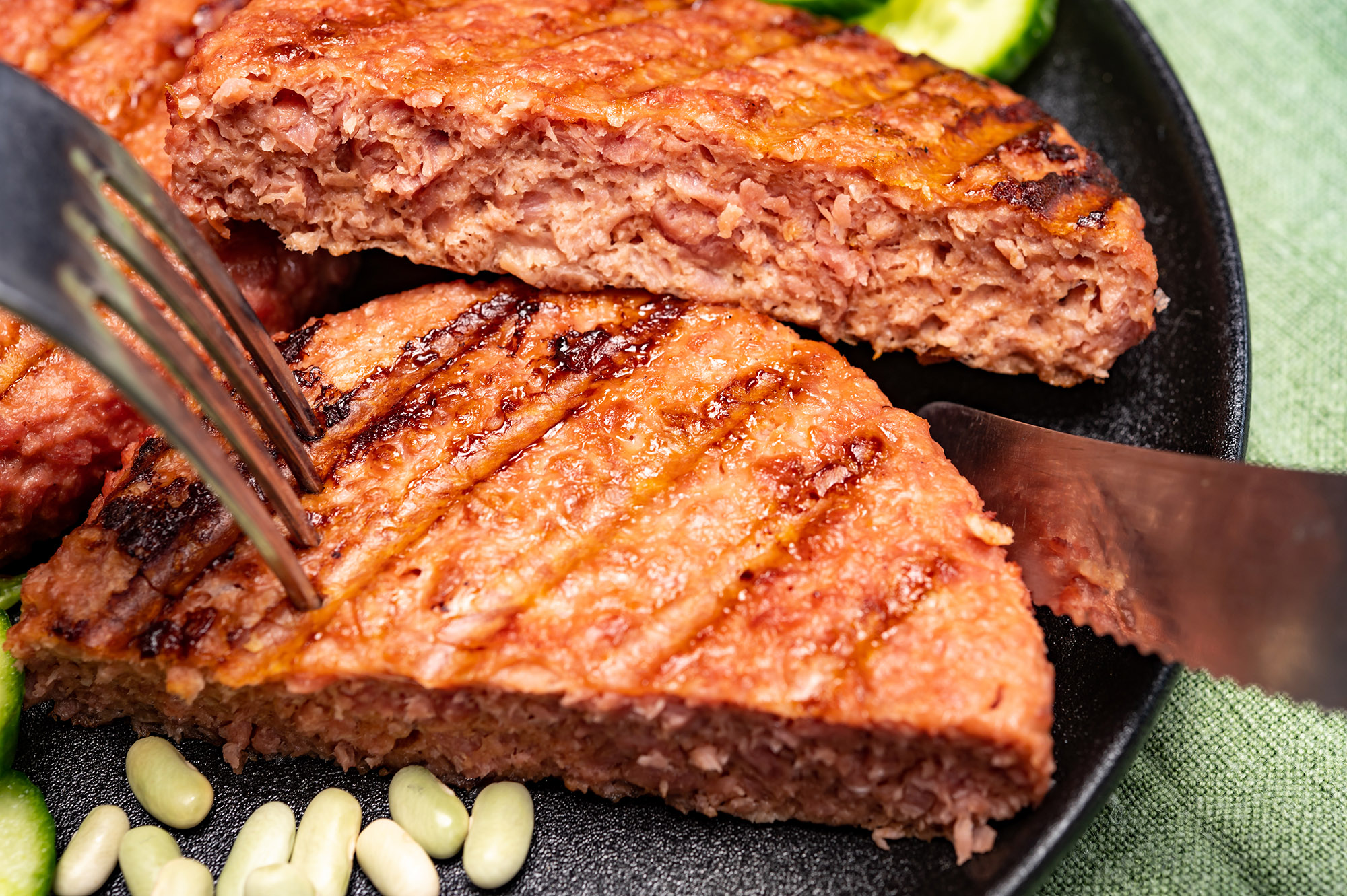

Wageningen study finds juiciness doesn’t impact aroma release in plant-based or beef patties
A new study led by Rutger Brouwer at Wageningen University & Research challenges the commonly held assumption that juicier meat results in stronger flavor perception. Published in the Journal of Agricultural and Food Chemistry, the research found that while cooking temperature significantly affects the perceived juiciness of both plant-based meat analogues (PBMAs) and beef patties, it does not significantly influence in vivo aroma release or perception.
The study focused on understanding whether juiciness – often linked with higher consumer acceptance – enhances the release and perception of aromas during consumption. “A better understanding of the mechanisms underlying aroma release and perception during the consumption of plant-based meat analogues might contribute to the development of PBMAs with improved flavor properties,” the authors wrote.
To measure aroma release and perception, the researchers used menthone, a peppermint-scented compound not naturally present in either beef or plant-based patties. By adding a trace amount of menthone to the patties and tracking its release during chewing, the team could monitor aroma intensity in real time using proton transfer reaction mass spectrometry (PTR-MS) and time-intensity (TI) profiling.
Participants chewed beef and plant-based patties cooked to different internal temperatures – 60°C, 70°C, and 90°C – to induce varying levels of juiciness. Juiciness was evaluated using both Rank-Rating and Rate-All-That-Apply (RATA) sensory methods across two separate panels. In both beef and PBMA patties, higher cooking temperatures resulted in significantly lower juiciness scores, confirming previous studies showing increased cooking loss at higher temperatures.
However, despite these clear differences in perceived juiciness, no significant differences were found in the release or perception of menthone aroma across the differently cooked samples. “This demonstrates that the perceived variations in juiciness of PBMA and beef patties did not cause significant differences in menthone release and peppermint aroma perception,” the researchers noted.
One reason for the lack of a correlation may be the limited amount of serum released during mastication. For patties cooked to 90°C, only around 3% of the product weight was released as serum, compared to 13% for those cooked to 60°C – a difference that may not be sufficient to impact aroma perception significantly. Additionally, much of the fat and water in the patties remained trapped within the food matrix, limiting aroma compound transport to the nasal cavity.
The type of aroma compound used may also have influenced results. Menthone is hydrophobic, meaning it tends to dissolve in fat rather than water. While one might expect this to facilitate its release from fatty matrices, the actual fat released during chewing was minimal. Previous studies have shown that compounds with lower log P values – indicating greater water solubility – are more likely to be released with increased juiciness.
In their sensory evaluation, the team also observed that juiciness in beef patties positively correlated with increased perceptions of saltiness, umami, and meat flavor, and negatively correlated with dryness and beany flavors. In contrast, plant-based patties showed a decrease in off-flavors with increased juiciness but little change in other taste and flavor attributes. The authors noted that structural differences between beef and PBMA patties, such as the thermal behavior of myofibrillar meat proteins versus pre-formed textured vegetable proteins, could explain why cooking temperature had a stronger effect on beef than on PBMA texture and taste profiles.
Despite these textural and taste differences, the absence of a clear link between juiciness and aroma perception underlines the complexity of flavor release mechanisms. It also suggests that improving the flavor experience of plant-based meat alternatives may require more than simply adjusting moisture levels or fat content.
The study was conducted by Brouwer, Yifan Zhang, Elke Scholten, Ciarán G. Forde, and Markus Stieger – all affiliated with Wageningen University & Research – and forms part of a special issue of the Journal of Agricultural and Food Chemistry highlighting work presented at the 17th International Weurman Flavour Research Symposium.
The authors suggest future research could explore other aroma compounds with varying chemical properties or more congruent flavor profiles to meat. “It is of interest to study the release and perception of aroma compounds that closely resemble meat flavor,” they wrote, adding that variations in fat type and serum composition in commercial PBMAs could also influence results.
The findings underscore the need for a nuanced approach to flavor development in both traditional and alternative meat products. While juiciness is undoubtedly a key sensory attribute for consumer satisfaction, its role in enhancing aroma release may be more limited – or more context-dependent – than previously thought.
If you have any questions or would like to get in touch with us, please email info@futureofproteinproduction.com


-p-800.jpg)



